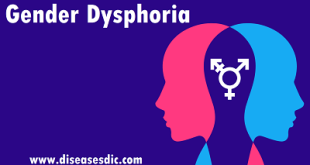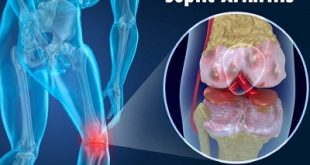Definition
Gastroenteritis, also referred to as ‘stomach flu’, is inflammation of the stomach and intestinal lining, which causes diarrhea and vomiting. It can be caused by a virus, a bacteria or a parasite. Norovirus is the most common cause of gastroenteritis in adults. In children, rotavirus is more often involved. These viruses circulate mainly in the fall and winter. Other viruses and bacteria can spread stomach flu, especially in people traveling abroad. Gastroenteritis is extremely contagious. You can avoid spreading and catching it through simple hygienic measures such as washing your hands.
Pathophysiology
Adequate fluid balance in humans depends on the secretion and reabsorption of fluid and electrolytes in the intestinal tract; diarrhea occurs when intestinal fluid output overwhelms the absorptive capacity of the gastrointestinal tract. The 2 primary mechanisms responsible for acute gastroenteritis are
- Damage to the villous brush border of the intestine, causing malabsorption of intestinal contents and leading to an osmotic diarrhea, and
- The release of toxins that bind to specific enterocyte receptors and cause the release of chloride ions into the intestinal lumen, leading to secretory diarrhea.
Even in severe diarrhea, however, various sodium-coupled solute co-transport mechanisms remain intact, allowing for the efficient reabsorption of salt and water. By providing a 1:1 proportion of sodium to glucose, classic oral rehydration solution (ORS) takes advantage of a specific sodium-glucose transporter (SGLT-1) to increase the reabsorption of sodium, which leads to the passive reabsorption of water. Rice and cereal-based ORS may also take advantage of sodium-amino acid transporters to increase reabsorption of fluid and electrolytes.
What Causes Gastroenteritis?
There are many ways gastroenteritis can be spread:
- Contact with someone who has the virus
- Contaminated food or water
- Unwashed hands after going to the bathroom or changing a diaper
The most common cause of gastroenteritis is a virus. The main types are rotavirus and norovirus.
Rotavirus is the world’s most common cause of diarrhea in infants and young children. Norovirus is the most common cause of serious gastroenteritis and also foodborne disease outbreaks in the U.S.
Although not as common, bacteria such as E. coli and salmonella can also trigger the stomach flu. Salmonella and campylobacter bacteria are the most common bacterial causes of gastroenteritis in the U.S. and are usually spread by undercooked poultry, eggs, or poultry juices. Salmonella can also be spread through pet reptiles or live poultry.
Another bacteria, shigella, is often passed around in day care centers. It typically is spread from person to person, and common sources of infection are contaminated food and drinking water.
Parasites can also cause gastroenteritis, but it’s not common. You can pick up organisms such as giardia and cryptosporidium in contaminated swimming pools or by drinking contaminated water.
There are also other unusual ways to get gastroenteritis:
- Heavy metals (arsenic, cadmium, lead, or mercury) in drinking water
- Eating a lot of acidic foods, like citrus fruit and tomatoes
- Toxins that might be found in certain seafood
- Medications such as antibiotics, antacids, laxatives, and chemotherapy drugs
Risk Factors
- Those who normally eat certain food products such as mayonnaise, cream, eggs or seafood.
- People with immune-deficiencies
- People residing in hospital clinics or reception centers.
- Age
- The patient’s health status
Symptoms of gastroenteritis
A healthy person can overcome the symptoms of gastroenteritis; however, children, the elderly, and people with compromised immune systems can get seriously ill.
Symptoms of gastroenteritis may include:
- Diarrhea
- Vomiting
- Loss of appetite
- Stomach pain and cramps
- Headaches
- Low blood pressure
- Dizziness and fainting
Sometimes a person can run a low-grade fever along with the above symptoms. In severe cases delirium may result. Symptoms of gastroenteritis can last for a few days, or longer if the person has a severe case.
Gastroenteritis often shares common symptoms with other medical conditions that need to be ruled out for a correct diagnosis.
Some of these other conditions may include:
- Appendicitis
- Inflammatory bowel disease
- Diabetes
- Celiac disease
- Urinary tract infections
Complications of gastroenteritis
Complications of gastroenteritis include the following:
- Dehydration
- Malabsorption
- Transient lactose intolerance
- Chronic diarrhea
- Systemic infection (meningitis, arthritis, pneumonia) especially with Salmonella infections
- Sepsis (Salmonella, Yersinia, Campylobacter organisms)
- Hemolytic-uremic syndrome (much more common in children, especially with E coli O157:H7)
- Toxic megacolon
- Reactive arthritides (Salmonella, Shigella, Yersinia, Campylobacter, Giardia organisms)
- Persistent diarrhea
- Thrombotic thrombocytopenic purpura or TTP (E coli O157:H7)
- Guillain-Barré syndrome (Campylobacter organisms)
Diagnosis
- Clinical evaluation
- Stool testing in select cases
Other gastrointestinal disorders that cause similar symptoms (eg, appendicitis, cholecystitis, ulcerative colitis) must be excluded (see also evaluation of diarrhea).
Findings suggestive of gastroenteritis include copious, watery diarrhea; ingestion of potentially contaminated food (particularly during a known outbreak), untreated surface water, or a known gastrointestinal irritant; recent travel; or contact with certain animals or similarly ill people.
- coli O157:H7–induced diarrhea is notorious for appearing to be a hemorrhagic rather than an infectious process, manifesting as gastrointestinal bleeding with little or no stool. Hemolytic-uremic syndrome may follow as evidenced by renal failure and hemolytic anemia.
Recent oral antibiotic use (within 3 months) must raise suspicion for C. difficile infection. However, about one fourth of patients with community-associated C. difficile infection do not have a history of recent antibiotic use.
Stool testing
Stool testing is guided by clinical findings and the organisms that are suspected based on patient history and epidemiologic factors (eg, immunosuppression, exposure to a known outbreak, recent travel, and recent antibiotic use). Cases are typically stratified into
- Acute watery diarrhea
- Subacute or chronic watery diarrhea
- Acute inflammatory diarrhea
Multiplex polymerase chain reaction platforms that can identify causative organisms in each of these categories are being used more often. However, this testing is expensive, and because the categories are distinguishable clinically, it is usually more cost-effective to test for specific microorganisms depending on the type and duration of diarrhea. In addition, polymerase chain reaction testing does not allow for antibiotic susceptibility testing.
Acute watery diarrhea is probably viral and testing is not indicated unless the diarrhea persists. Although rotavirus and enteric adenovirus infections can be diagnosed using commercially available rapid assays that detect viral antigen in the stool, these assays are rarely indicated.
Subacute and chronic watery diarrhea require testing for parasitic causes, typically with microscopic stool examination for ova and parasites. Fecal antigen tests are available for Giardia, Cryptosporidia, and Entamoeba histolytica and are more sensitive than microscopic stool examination.
Acute inflammatory diarrhea without gross blood can be recognized by the presence of WBCs on stool examination. Patients should have stool culture for typical enteric pathogens (eg, Salmonella, Shigella, Campylobacter, E. coli).
Acute inflammatory diarrhea with gross blood should also prompt testing specifically for E. coli O157:H7, as should nonbloody diarrhea during a known outbreak. Specific cultures must be requested because this organism is not detected on standard stool culture media. Alternatively, a rapid enzyme assay for the detection of Shiga toxin in stool can be done; a positive test indicates infection with E. coli O157:H7 or one of the other serotypes of enterohemorrhagic E. coli. (NOTE: Shigella species in the US do not produce Shiga toxin.) However, a rapid enzyme assay is not as sensitive as culture. Polymerase chain reaction testing is used to detect Shiga toxin in some centers.
Adults with grossly bloody diarrhea should usually have sigmoidoscopy with cultures and biopsy. Appearance of the colonic mucosa may help diagnose amebic dysentery, shigellosis, and E. coli O157:H7 infection, although ulcerative colitis may cause similar lesions.
Patients with a history of recent antibiotic use or other risk factors for C. difficile infection (eg, inflammatory bowel disease, use of proton pump inhibitors) should have a stool assay for C. difficile toxin, but testing should also be done in patients with significant illness even when these risk factors are not present because about 25% of cases of C. difficile infection currently occur in people without identified risk factors. Historically, enzyme immunoassays for toxins A and B were used to diagnose C. difficile infection. However, nucleic acid amplification tests targeting one of the C. difficile toxin genes or their regulator have been shown to have higher sensitivity and are now the diagnostic tests of choice.
General tests
Serum electrolytes, blood urea nitrogen (BUN), and creatinine should be obtained to evaluate hydration and acid-base status in patients who appear seriously ill. Complete blood count (CBC) is nonspecific, although eosinophilia may indicate parasitic infection. Renal function tests and CBC should be done about a week after the start of symptoms in patients with E. coli O157:H7 to detect early-onset hemolytic-uremic syndrome. It is unclear whether this testing is necessary in patients with non–E. coli O157:H7 Shiga toxin infection.
Treatment for gastroenteritis
Call ambulance if:
- The person is in shock from severe dehydration (faints, can’t walk, is confused or is having trouble breathing)
Know the Signs of an Emergency:
Dehydration with the following symptoms should be evaluated and treated in an emergency room:
- Little to no urination
- Extreme thirst
- Lack of tears
- Dry mouth
- Sunken eyes
- Dizziness or lightheadedness
- Rapid breathing and heartbeat
- Lack of alertness
- Blurred or double vision
- Trouble swallowing or breathing
- Muscle weakness
Signs of food poisoning from eating a canned food:
- Symptoms may start within hours of eating the contaminated food
- Others who ate the food are also sick
- Nausea and/or vomiting
- Abdominal pain and cramping
- Watery diarrhea
- Fever
Prevent Dehydration
- Give a child an oral rehydration solution. Call your health care provider for age-appropriate dosing specifics.
- Give an adult as much clear fluid as possible.
- The person should drink fluids slowly in frequent, small amounts. Drinking too much too fast can worsen nausea.
When to Call a Doctor
Seek medical help if:
- Vomiting in an adult or a child age 2 or older lasts more than 1 day or a fever or severe diarrhea (large amounts of loose stool every 1 to 2 hours) lasts more than 2 days.
- A child under age 2 has vomiting or diarrhea for more than 12 hours or has a fever with vomiting and diarrhea.
- Vomit or diarrhea turns bloody or tarry.
- The person has kidney, liver, or heart disease and must restrict fluid intake.
- The person develops sudden, severe abdominal pain.
- Dehydration symptoms develop.
- Symptoms fail to resolve after a week.
Follow Up
- Gradually ease food back into the person’s diet.
- Start with bland, easy-to-digest food such as crackers, bananas, toast, rice, and chicken.
- Avoid dairy, caffeine, and alcohol until recovery is complete.
- If medical treatment is necessary, the person may receive fluids intravenously and anti-nausea medications.
How can you prevent gastroenteritis?
The best thing you can do to keep from catching gastroenteritis from someone else is to make a habit of washing your hands often. This is especially important after you use the bathroom, after you change a baby’s diaper, and before you eat or prepare food.
Don’t share personal items like forks and spoons, toothbrushes, and towels. Try not to be around others who have stomach flu. Keep your hands away from your nose, eyes, and mouth.
You can prevent foodborne illness by taking steps to make sure your food is not contaminated:
- Wash cutting boards and countertops often with hot, soapy water. Consider using disinfectant sprays or wipes on your counters.
- Keep hot foods hot and cold foods cold.
- Do not eat meats, dressings, salads, or other foods that have been kept at room temperature for more than 2 hours.
- Use a thermometer to check your refrigerator. It should be between 1°C (34°F) and 4°C (40°F).
- Defrost meats in the refrigerator or microwave, not on the kitchen counter.
- Cook meat until it is well done.
- Do not eat raw eggs or uncooked sauces made with raw eggs.
- Do not take chances. If food looks or tastes spoiled, throw it out.
- Be extra careful when you travel. In some countries, you may not want to drink water from the tap (including ice cubes) or eat any raw foods.
 Diseases Treatments Dictionary This is complete solution to read all diseases treatments Which covers Prevention, Causes, Symptoms, Medical Terms, Drugs, Prescription, Natural Remedies with cures and Treatments. Most of the common diseases were listed in names, split with categories.
Diseases Treatments Dictionary This is complete solution to read all diseases treatments Which covers Prevention, Causes, Symptoms, Medical Terms, Drugs, Prescription, Natural Remedies with cures and Treatments. Most of the common diseases were listed in names, split with categories.








what are the laboratory investigations for gastroenteritis
Stool tests: These are the most common diagnostic tests performed to identify the pathogen that has caused gastroenteritis. These include: Stool culture: A sample of your stool would be cultured in a specific nutrient media which allows the selective growth of the pathogen.
bowl infection tablet give me answer plz sir
Gastrointestinal infections can be bacterial or viral. Symptoms include diarrhea, nausea, vomiting, fever, and abdominal pain. Popular drugs for bowel infection includes:
Sulfatrim (sulfamethoxazole / trimethoprim)
Bactrim (sulfamethoxazole / trimethoprim)
Flagyl (metronidazole)
can it cause peptic ulcer?
Gastroenteritis, typically caused by infections or inflammation of the digestive tract, is not a direct cause of peptic ulcers. However, severe or prolonged inflammation and irritation in the gastrointestinal system may contribute to the development of peptic ulcers in susceptible individuals. Factors such as the presence of Helicobacter pylori bacteria and the use of nonsteroidal anti-inflammatory drugs (NSAIDs) are more commonly associated with peptic ulcer formation. If you suspect you have peptic ulcers, consult with a healthcare professional for proper diagnosis and management.